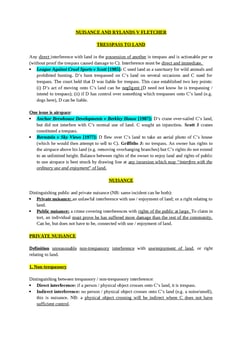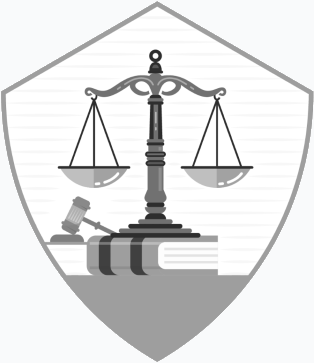Monson v Tussauds [1894] 1 QB 671
Judgement for the case Monson v Tussauds
Table Of Contents
KEY POINTS
Libel cases often involve the consideration of injunctions, especially interlocutory injunctions, pending a trial. The exhibition of an effigy, if deemed libelous, may be subject to court orders.
A crucial question in such cases is whether the plaintiff consented to the exhibition. The determination of whether the exhibited content is libelous or not is typically a matter for the jury to decide.
The discretion of the court is significant in granting or denying injunctions. These legal proceedings are governed by the Judicature Act of 1873, under section 25, sub-section 8.
FACTS
The plaintiff had previously stood trial in Scotland on a charge of murder involving a gunshot. The verdict rendered by the jury was "Not proven."
Subsequently, the proprietors of a wax figure exhibition, which featured representations of both celebrated and notorious individuals, included a model of the plaintiff holding a gun described as his own. This figure was placed in a separate room behind a turnstile, where an additional sixpence was charged for entry. The same room also housed figures of Emperor Napoleon I, along with three other individuals. Among the three, one had been convicted of murder, another had committed suicide to evade arrest, and the third was a person implicated in the alleged murder for which the plaintiff was charged but remained untraceable. The room contained various other objects of interest, including historical relics related to Emperor Napoleon and the Duke of Wellington.
Visitors to this room had the option to access another room called the "Chamber of Horrors" by descending a staircase, and this required no further payment. The "Chamber of Horrors" exhibited figures primarily representing notorious murderers and featured relics and models of murder scenes. Notably, this room included a model of the location where the murder in the plaintiff's case was alleged to have occurred.
The plaintiff initiated legal action against the exhibition proprietors, accusing them of libel.
As part of the legal proceedings, the plaintiff sought an interlocutory injunction to prevent the defendant from displaying the wax figure of himself during the lawsuit trial. The defendants' defense did not aim to justify the exhibition but rather contended that the display was not libelous.
JUDGEMENT
The Queen's Bench Division, consisting of Justices Mathew and Collins, held that the case was unequivocally one of libel, making a contrary verdict unreasonable. Consequently, given the circumstances, an interlocutory injunction should be granted.
However, on appeal, with additional affidavits indicating a potential question at the trial regarding the plaintiff's consent to the exhibition, the Court of Appeal, including Lord Halsbury, Lopes, L. J., and Davey, L. J., determined that according to the precedent set in Bonnard v. Perryman ([1891] 2 Ch. 269), an interlocutory injunction should not be granted in this case.
COMMENTARY
Libel cases often involve the potential issuance of injunctions, particularly interlocutory injunctions pending a trial, which raise legal considerations. These cases typically revolve around exhibitions of effigies or representations that may be deemed libelous, leading to court involvement.
The court's discretion plays a significant role in deciding whether to grant or deny injunctions, with legal proceedings governed by the Judicature Act of 1873, specifically under section 25, sub-section 8.
In a specific case, the plaintiff had previously faced a trial in Scotland related to a gunshot murder charge, resulting in a "Not proven" verdict. The proprietors of a wax figure exhibition featuring both famous and infamous figures included a model of the plaintiff holding a purportedly authentic gun. This model was showcased in a dedicated room with an admission fee. This room also featured figures such as Emperor Napoleon I and individuals connected to criminal histories.
Visitors had the option to access the "Chamber of Horrors," which displayed representations of notorious murderers and models of crime scenes, including the alleged site of the plaintiff's murder case.
The plaintiff initiated legal action against the exhibition proprietors, claiming libel. During the legal proceedings, the plaintiff sought an interlocutory injunction to prevent the display of the wax figure resembling himself during the lawsuit's trial. The defendants' defense did not aim to justify the exhibition but rather argued that the display was not libelous.
The Queen's Bench Division initially determined the case as unequivocally one of libel, warranting an interlocutory injunction due to the circumstances.
However, the Court of Appeal reviewed the case on appeal and considered additional affidavits suggesting a potential issue at trial regarding the plaintiff's consent to the exhibition. Relying on the precedent set in Bonnard v. Perryman ([1891] 2 Ch. 269), the Court of Appeal determined that an interlocutory injunction should not be granted in this specific case.
ORIGINAL ANALYSIS
Plaintiff’s waxwork effigy was placed in a room with effigies of murderers entitled “chamber of horrors” on account of his being accused of murdering a person.
However he had been found not guilty and sued Defendant for defamation.
CA said that there was defamation arising from the effigy’s placement and carried a defamatory meaning.
Lopes LJ
libels are generally in writing …but this is not necessary; the defamatory matter may be conveyed in some other permanent form. For instance, a statue, caricature, effigy, chalk marks on a wall, signs or pictures may constitute a libel.
For Further Study on Monson v Tussauds
Need instant answers? Our AI exam tutor is here to help.
Ask questions 🙋 Get answers 📔 It's simple 👁️👄👁️
Our AI is educated by the highest scoring students across all subjects and schools. Join hundreds of your peers today.
Get StartedRelated Product Samples
These product samples contain the same concepts we cover in this case.

 Since 2010, Oxbridge Notes has been a trusted education marketplace, supplying high-quality materials from top achievers at universities like Oxford, Cambridge, LSE, Harvard, and Yale.
Since 2010, Oxbridge Notes has been a trusted education marketplace, supplying high-quality materials from top achievers at universities like Oxford, Cambridge, LSE, Harvard, and Yale.